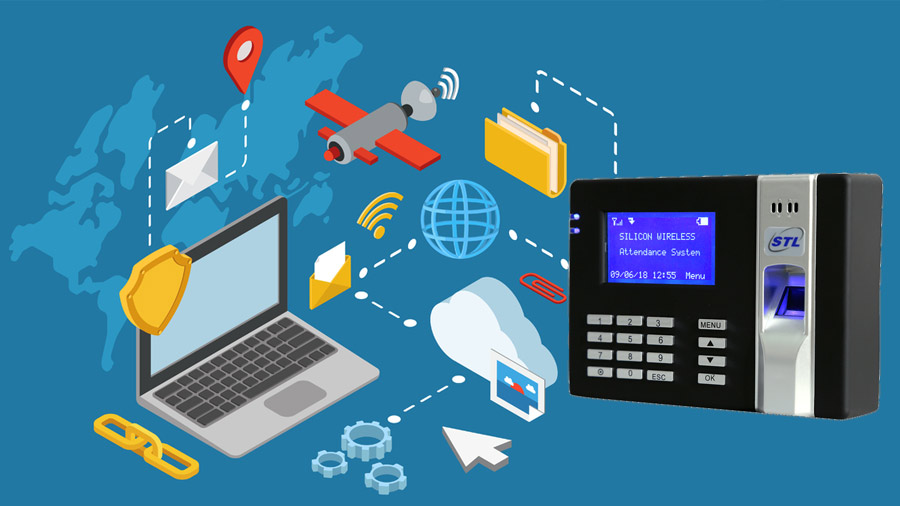Why Your Business Needs a Cloud-Based Attendance System?
In today’s fast-paced and digitally driven world, traditional methods of tracking employee attendance are rapidly becoming obsolete. The shift towards remote and hybrid working models has made it essential for organizations to adopt flexible, scalable, and secure solutions for managing employee presence. Enter the cloud-based attendance system—a modern approach to workforce management that ensures accuracy, transparency, and convenience.
What is a Cloud-Based Attendance System?
A cloud-based attendance system is a digital solution hosted on the cloud that enables organizations to monitor and manage employee attendance in real-time. Unlike traditional attendance tracking methods that rely on manual entry, punch cards, or on-premise servers, cloud attendance software offers centralized data access and automation through internet-enabled devices.
This system allows HR departments and management teams to streamline attendance monitoring, track working hours, generate reports, and integrate data with payroll systems without being confined to a single location. Whether employees are working from home, in the office, or from multiple locations worldwide, a cloud attendance system ensures seamless tracking.
Key Features of Cloud Attendance Software
Modern cloud attendance software is equipped with several innovative features designed to enhance productivity and reduce administrative burdens:
Real-Time Tracking: Attendance is updated in real-time, giving managers up-to-the-minute data on employee availability and working hours.
Mobile Accessibility: Most systems offer mobile apps, enabling employees to clock in and out from their smartphones using GPS verification.
Biometric Integration: Integration with biometric systems like fingerprint or facial recognition adds a layer of security and authenticity.
Automated Reports: Generate daily, weekly, or monthly attendance reports automatically, reducing the need for manual calculations.
Leave Management: Integrated leave tracking helps in managing sick days, vacations, and other types of leave efficiently.
Payroll Integration: Automatically syncs attendance data with payroll systems to ensure accurate salary processing.
Benefits of a Cloud Attendance System
Implementing a cloud-based attendance system brings a host of benefits for organizations of all sizes:
Increased Accuracy and Reduced Errors
A cloud attendance software minimizes these risks by automating data collection and storage, ensuring consistent and error-free records.
Enhanced Accessibility and Flexibility
With cloud systems, HR managers and employees can access attendance data from anywhere at any time.
Scalability
As businesses grow, so do their operational complexities. A cloud based attendance system is highly scalable, making it easy to accommodate new employees, offices, and departments without the need for costly infrastructure changes.
Data Security and Backup
Cloud platforms offer robust security features including encryption, multi-factor authentication, and regular backups, ensuring that sensitive employee data is protected and retrievable in case of system failures.
Cost-Efficiency
There are no hardware costs, no maintenance of on-premise servers, and no need for dedicated IT support staff. Most cloud solutions operate on a subscription model, which can be more budget-friendly.
Environmentally Friendly
By eliminating the need for paper timesheets and reducing administrative overhead, cloud attendance software contributes to an organization’s sustainability goals.
Use Cases Across Industries
The adaptability of cloud-based attendance systems makes them suitable for various industries:
Retail and Hospitality: Easily manage shifts and monitor attendance across multiple outlets.
Healthcare: Ensure round-the-clock staff tracking and compliance with labor laws.
Construction: Track site workers using GPS-enabled mobile check-ins.
Education: Manage faculty and staff attendance efficiently.
Choosing the Right Cloud Attendance Software
When selecting a cloud attendance system, consider the following factors:
Ease of Use: The interface should be user-friendly for both employees and administrators.
Customization Options: Every organization has unique needs, so flexibility in features and configurations is important.
Support and Reliability: Ensure that the provider offers reliable uptime and responsive customer support.
The Future of Attendance Management
As technology continues to evolve, cloud-based attendance systems are expected to become even more advanced with AI-powered analytics, facial recognition, geofencing, and predictive scheduling. These enhancements will further simplify workforce management and provide deeper insights into employee performance and productivity.
Conclusion
Switching to a cloud attendance system is more than just a technological upgrade—it’s a strategic decision that can improve organizational efficiency, employee satisfaction, and cost management. As businesses continue to navigate the complexities of modern work environments, adopting a HRMS software stands out as a smart, scalable, and sustainable solution for the future.

